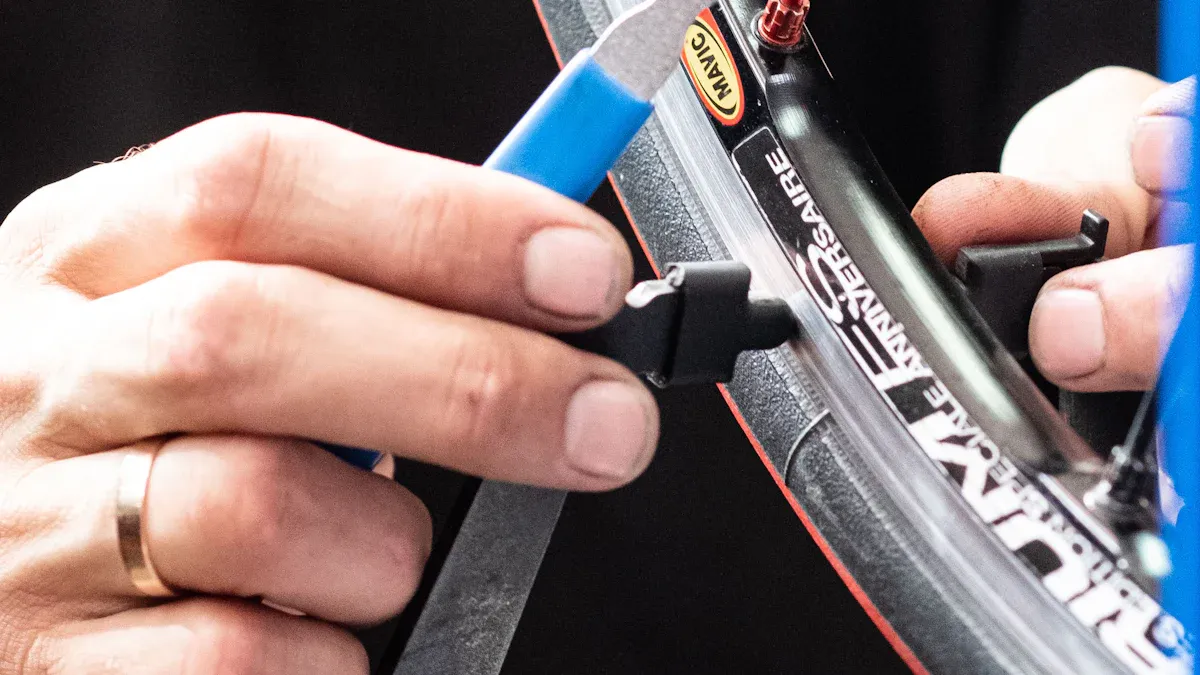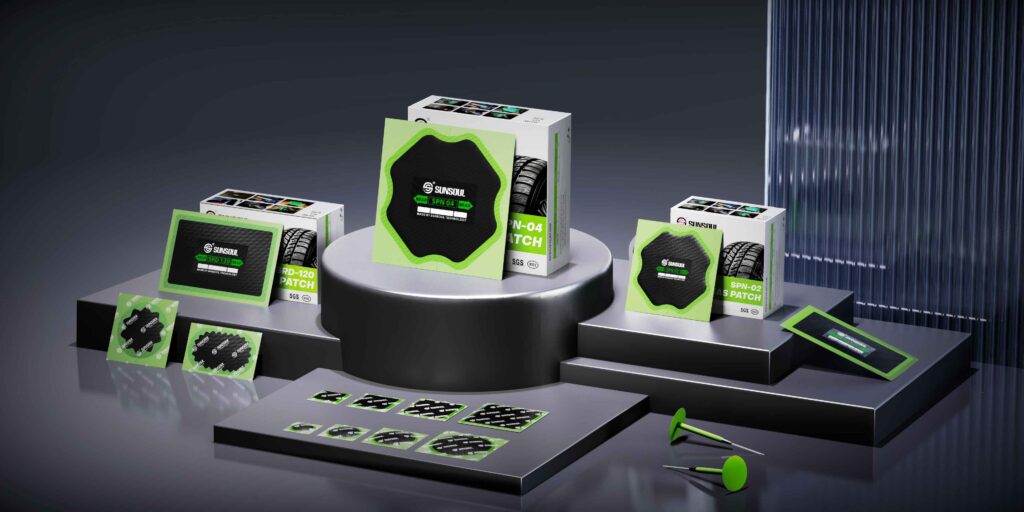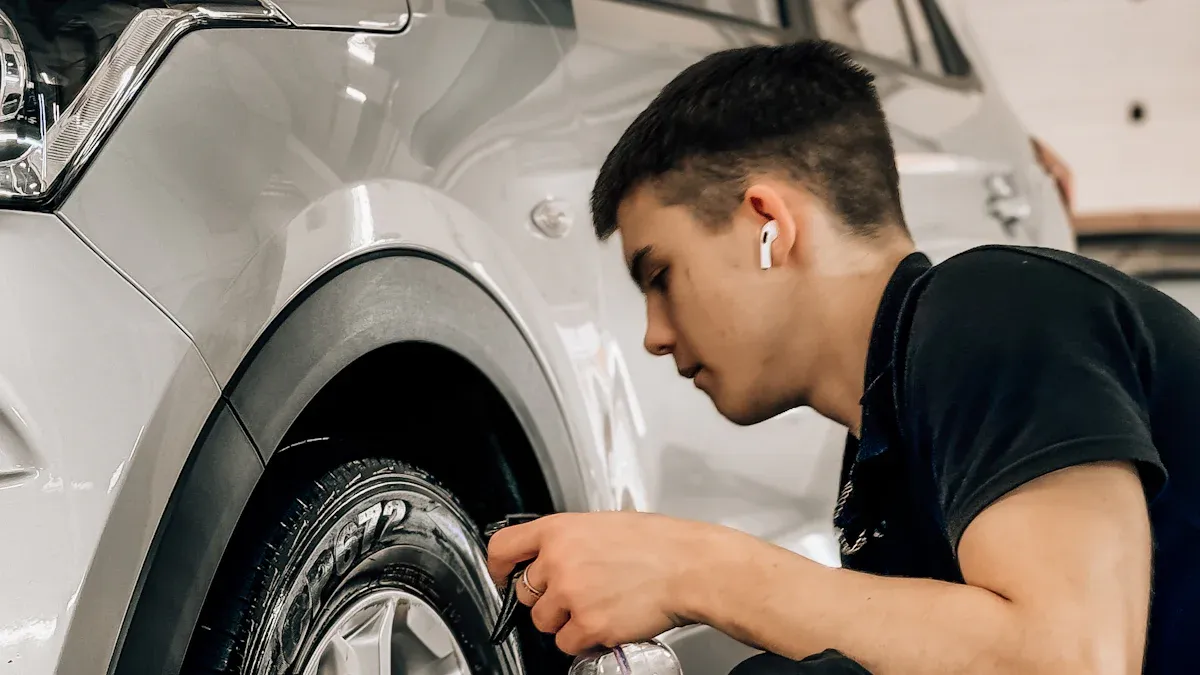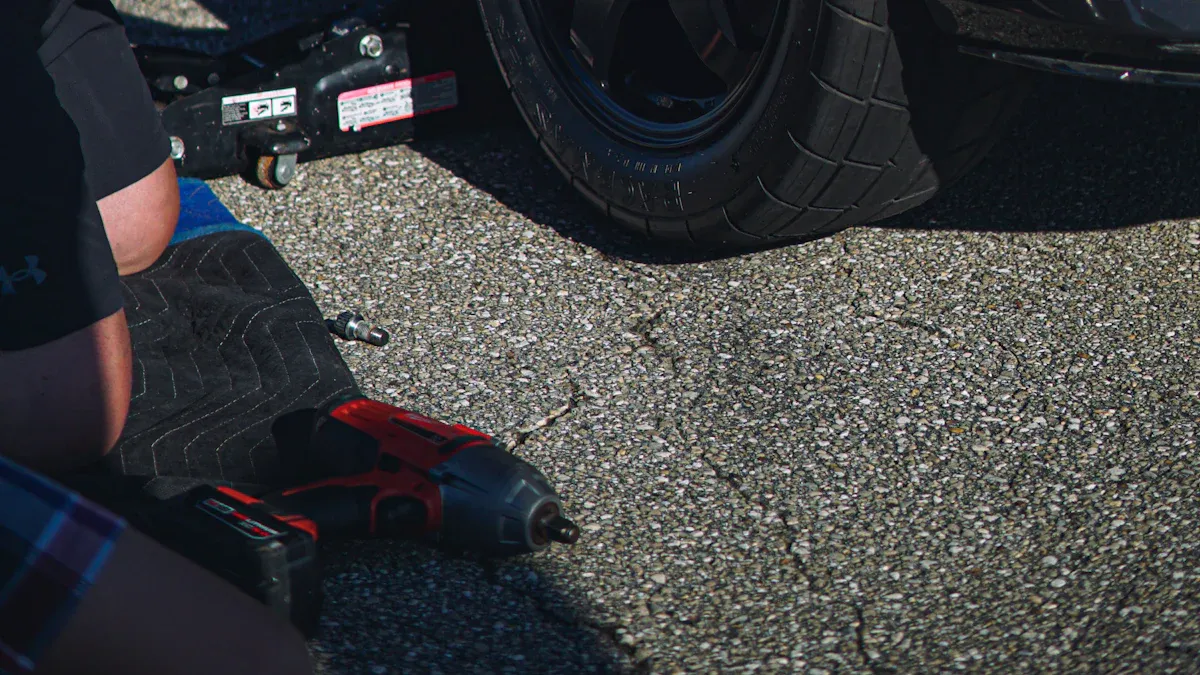You can trust a vulcanizing tire patch to provide a safe and lasting fix for most punctures. Use a vulcanizing rubber patch when you need a strong seal that keeps air inside the tire. Always follow each step for proper tire repair to make sure your tire stays safe. If you handle vulcanizing with care and attention, you can rely on these repairs for daily driving.
Key Takeaways
Use vulcanizing tire patches only for small holes in the tread. Never use them on the sidewall or shoulder.
Always take the tire off the rim before fixing it. This helps you check for hidden damage. It also makes sure the patch sticks well.
Follow the right steps: clean and buff the spot. Put on vulcanizing cement. Place the patch on carefully. Let it cure all the way.
Check the repair for leaks. Make sure the tire is filled right before you drive. This keeps your tire safe and working well.
Pick trusted brands like Sunsoul for good patches. Good brands help your tire repairs last longer.
Safety and Effectiveness
When to Use a Vulcanizing Tire Patch
You want to fix a flat tire safely and permanently. A vulcanizing tire patch works best for small punctures in the tread area. Tire manufacturers recommend this method when the puncture is less than a quarter of an inch wide and not on the sidewall. You should always remove the tire from the rim before starting the repair. This step lets you inspect the inside and make sure the damage is not too severe.
Tip: Only use a vulcanizing tire patch for punctures in the tread, not the sidewall or shoulder. If you see a large hole or sidewall damage, replace the tire instead.
Many experts, including the National Highway Traffic Safety Administration (NHTSA), say that tire plug and patch kit is the only permanent way to fix a flat. These kits combine a plug and a rubber patch for tires. The plug fills the puncture channel, and the patch bonds to the inside, creating a strong, airtight seal. This double layer keeps air and moisture out, which helps prevent future problems like blowouts or leaks. Plug-only or patch-only repairs do not offer the same level of safety and should only be used for emergencies.
Limitations and Precautions
You need to know the limits of tire repair. Tire safety groups say you should only patch small punctures in the tread, no bigger than 1/4 inch. Never use a patch for sidewall or shoulder damage, large punctures, or if you find several punctures close together. Each time you patch a tire, its structure gets a little weaker. Most experts say you should not patch a tire more than three times.
Do not try to fix a flat tire with a vulcanizing tire patch if you see bubbles, sidewall damage, or if the tire has been driven flat for a long time.
Always follow the correct steps: remove the tire, clean and prepare the area, and apply the patch with vulcanizing cement.
If you feel unsure about the repair or see major damage, ask a professional for help.
Proper repairs keep your tire safe and help prevent dangerous blowouts. Over-patching or fixing overlapping punctures can make the tire unsafe. Always check the tire carefully before you start any repairs.
Vulcanizing Tire Patch Science
Chemical Bonding Explained
When you use a vulcanizing tire patch, you depend on a special chemical process. This process is called vulcanization. Vulcanization makes a strong bond between the patch and the tire. Here is what happens:
Vulcanization begins when you put a vulcanizing solution on the cleaned, rough area.
The solution has chemicals that break some sulfur bonds in the tire rubber.
When you press the vulcanizing patch onto the tire, new sulfur bonds form.
This chemical reaction makes a covalent bond. This bond is much stronger than just sticking things together.
Getting the surface ready by scuffing and cleaning helps the patch stick well and stops leaks.
Note: Vulcanizing is not the same as using rubber cement. Rubber cement only sticks the patch to the tire. Vulcanization changes the rubber at a tiny level. This makes the repair much stronger and more dependable.
Durability and Leak Prevention
A vulcanizing tire patch gives repairs that last a long time. This is because of the strong chemical bond it makes. When you fix a hole with a vulcanizing patch, you make a seal that can last as long as the tire. Most repairs like this last 7 to 10 years if you drive normally. The patch keeps out air and water, so you do not need to worry about leaks.
Repairs in the tread last longer than those near the sidewall.
Checking your tires often and driving carefully helps repairs last longer.
The vulcanizing patch presses tightly between the tire and the tube. This “sandwich” effect makes it even stronger.
If you follow the right steps, you can trust a vulcanizing tire patch to keep your tire safe and full of air for years. This way of fixing tires is great at handling daily use and stopping future holes.
Tire Repair Steps

Preparation
You need to start every tire repair by preparing the tire and the work area. This step helps you make sure the repair will last and keep you safe on the road. Follow this step-by-step process to get the tire ready:
Remove the tire from the rim. This gives you full access to the inside and outside of the tire.
Inspect both sides of the tire. Look for all signs of damage, not just the main puncture.
Trim away any loose or damaged material around the puncture. Use a sharp knife or a carbide cutter for this job.
Pull a rubber stem or plug through the puncture from the inside out. This fills the hole and seals the inside.
Buff the area around the puncture on the inside of the tire. Use a flared contour buffing wheel or a wire brush to roughen the surface. This helps the patch stick better.
Clean the buffed area with a professional cleaner like Bufsol Pre-Buff Cleaner. This removes dust and oil, making a strong bond possible.
Mark the area to be patched. Use a chalk or marker to outline the spot.
Tip: Always use the right tools for each step. Cleaning agents, buffing wheels, and inspection tools help you do a proper tire repair.
Applying the Patch
After you finish preparing the tire, you can apply the vulcanizing patch. The way you do this depends on whether you use hot or cold vulcanization.
Cold Vulcanization:
This method works well for most tubeless tires. You apply vulcanizing fluid to the cleaned and buffed area. Wait for the fluid to dry until it feels tacky. Place the patch over the puncture. Press down firmly to remove air bubbles. Use a roller or your hand to make sure the patch sticks well. Cold vulcanization does not need heat.Hot Vulcanization:
This method uses heat to bond the patch. Place a special patch with a metal cup and rubber sealant over the puncture. Clamp it in place. Ignite the flammable material in the cup. The heat causes vulcanization, welding the patch to the tire. Keep the clamp on until the patch cools and sets.
Note: Both methods need careful surface preparation. Hot vulcanizing works best for inner tubes and some heavy-duty tires. Cold vulcanizing is easier and safer for most car and truck tires.
Make sure you use a proper patch that matches the size of the puncture. Always follow the instructions for the patch and vulcanizing fluid.
Curing and Inspection
Once you apply the patch, you need to let it cure. Curing means waiting for the chemical or heat reaction to finish. This step is important for a strong bond.
Let the patch cure fully. For cold vulcanization, wait as long as the patch instructions say. For hot vulcanization, wait until the patch cools down.
Inspect the repair. Check that the patch covers the puncture and sticks tightly to the tire.
Mount the tire back on the rim. Inflate it to the correct pressure.
Check for leaks. Use soapy water around the repair area. If you see bubbles, the repair did not seal.
Make sure the tire holds air and the repair feels secure.
Safety Alert: Never skip the inspection step. A careful check helps you avoid future problems and keeps your tire repair process safe.
You can trust a vulcanizing tire patch to last if you follow these steps. Always use the right materials and tools. Proper tire repair keeps you safe and helps your tires last longer. If you ever feel unsure, ask a professional for help.
Tips and Mistakes
Best Practices
You can make your tire repair last longer by following some simple steps. Good habits help you stay safe and keep your tires in top shape.
Always check the air pressure after you fix your tire. Proper inflation keeps your tire strong and helps the patch work well.
Remove the tire from the rim before you start any repair. This lets you see hidden damage inside the tire.
Use the right tools and follow the correct steps. Trained professionals know how to do this best, but you can learn the basics too.
Look at your tires often. Watch for uneven tread, cracks, or other signs of wear.
Do not overload your vehicle. Too much weight puts extra stress on the patch and the tire.
Tip: Regular inspections help you find problems early. Fixing small issues right away can stop bigger problems later.
Common Errors
Many people make mistakes when they try to fix a tire. These errors can lead to bigger problems and even accidents.
Some people only use a plug or a patch without filling the hole the right way. This mistake lets water get inside the tire. Water can rust the steel cords and cause the tire layers to separate. Air leaks and underinflation may happen if you do not repair the tire from the inside. Sometimes, people skip removing the tire from the rim. This can hide other damage, like cuts or broken cords, which makes the tire unsafe.
If you do not fix the tire properly, you risk tire failure and early tire loss. You might also face higher costs and safety dangers. Always fill the injury and use a patch on the inside. Trained people with the right tools should do this job to keep you safe on the road.
Alert: Never skip steps or use shortcuts. Careful repairs protect you and your passengers every time you drive.
Sunsoul Brand Advantages

About Sunsoul
You need a tire patch brand you can trust. Sunsoul is a top maker in China. The company is called NINGBO SUNSOUL AUTO ACCESSORIES CO.,LTD. They are known around the world. Sunsoul makes more than 2 million tire patches each month. Their products are sold in over 60 countries. Many repair shops and drivers use Sunsoul for safe, long-lasting tire repairs.
Sunsoul patches work for many vehicles. You can use them on bikes, motorcycles, cars, trucks, and farm machines. Their team works hard to follow new technology and what customers want. Sunsoul builds strong ties with dealers and repair shops everywhere.
Product Strengths
You get many good things when you pick Sunsoul tire patches. Their patches stick well and have thick, round shapes to stop peeling. Each patch uses vulcanizing gum to make a tight, leak-proof seal for any tire. Sunsoul has many products, like chemical cure patches, dual cure patches, rubber solutions, mounting paste, cushion gum, and sealants.
Sunsoul gives you more than just patches. You get help from research to after-sales service. Their team helps with training, shipping, and even support in different languages. Sunsoul’s after-sales service gives you:
Free help with using products and software updates
Quick refunds or new products if there are problems
Support to help your business grow and sell more
Custom designs and free ODM services for VIPs
Careful quality checks and after-sales follow-up
Tip: Sunsoul’s business plan puts quality and service first. You can trust them for good products and help that make your business better.
You can achieve safe, lasting tire repair by following each step carefully:
Prepare the surface and apply a thin, even layer of glue.
Let the glue dry fully before placing the patch.
Center the patch, press firmly, and inspect the bond.
Leave the protective cover on and inflate the tire.
If you see severe damage or feel unsure, ask a professional for help. Trusted brands like Sunsoul offer reliable repairs and support for proper tire repair.
FAQ
How long does a vulcanizing tire patch repair last?
You can expect a quality vulcanizing tire patch to last as long as the tire’s tread. Most repairs hold up for 7 to 10 years with normal driving and regular tire checks.
Can you use a vulcanizing patch on any part of the tire?
You should only use a vulcanizing patch on the tread area. Never patch the sidewall or shoulder. These areas flex more and cannot hold a safe repair.
What is the difference between hot and cold vulcanization?
Hot Vulcanization | Cold Vulcanization |
|---|---|
Uses heat to cure patch | Uses chemical reaction |
Best for heavy-duty tires | Best for most car tires |
Needs special equipment | Easier for home repairs |
Do you need to remove the tire from the rim for repair?
You must remove the tire from the rim. This step lets you check for hidden damage and ensures the patch bonds correctly. Skipping this step can lead to unsafe repairs.
Can you drive right after patching a tire?
For cold vulcanization, wait until the patch cures fully.
For hot vulcanization, let the tire cool before use.
Always check for leaks before driving.
Safety first! Never rush the curing process.





